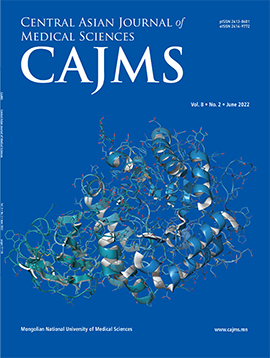Growth Inhibition and Apoptosis of Ehrlich Ascites Carcinoma Cells by Methanol Extract from the Calyx of Hibiscus Sabdariffa Linn
DOI:
https://doi.org/10.24079/cajms.2018.06.007Keywords:
Hibiscus sabdariffa, antioxidant, antineoplastic, apoptosis, Ehrlich ascites carcinomaAbstract
Objectives: This study focused on the antioxidant and anticancer activities of methanolic extract of Hibiscus sabdariffa calyx. Methods: In vitro methods were used to determine the different types of phytochemical content and antioxidant activity of methanolic extract of Hibiscus sabdariffa calyx as well as its cytotoxic effect against Ehrlich ascites carcinoma cells. In vivo, the antineoplastic effect of methanolic extract of Hibiscus sabdariffa calyx against Ehrlich ascites carcinoma was also evaluated by determining the viable tumor cell count, survival time, body weight gain, and hematological profi les of experimental mice along with observing morphological changes of Ehrlich ascites carcinoma cells by fl uorescence microscopy and determining the expression of p53 gene in Ehrlich ascites carcinoma cell assayed by reverse transcription-polymerase chain reaction. Chemical composition of methanolic extract of Hibiscus sabdariffa calyx was analyzed by gas chromatography–mass spectrometry. Results: Flavonoid rich methanolic extract of Hibiscus sabdariffa calyx had showed remarkable antioxidant activity and in in vitro assay, methanolic extract of Hibiscus sabdariffa calyx had potent inhibitory effect against Ehrlich ascites carcinoma cells with a half maximal inhibitory concentration of 28.16 µg/mL. Apoptotic morphological changes and increased expression of p53 gene in Ehrlich ascites carcinoma cells derived from methanolic extract of Hibiscus sabdariffa calyx-treated (5 and 10 mg/kg/day) mice were also observed. Moreover, chemical constituents identifi ed by gas chromatography–mass spectrometry analyses were likely related to this activity. Conclusion: Methanolic extract of Hibiscus sabdariffa calyx has promising antioxidant and antineoplastic potential and can be considered as a probable new source for antitumor agent.
Downloads
209
Downloads
Published
How to Cite
Issue
Section
License
Copyright (c) 2018 Mongolian National University of Medical Sciences

This work is licensed under a Creative Commons Attribution-NonCommercial 4.0 International License.




